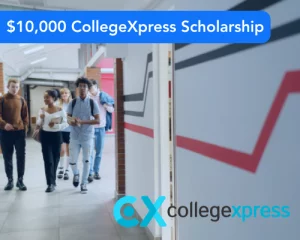Student-centric advice and objective recommendations
Higher education has never been more confusing or expensive. Our goal is to help you navigate the very big decisions related to higher ed with objective information and expert advice. Each piece of content on the site is original, based on extensive research, and reviewed by multiple editors, including a subject matter expert. This ensures that all of our content is up-to-date, useful, accurate, and thorough.
Our reviews and recommendations are based on extensive research, testing, and feedback. We may receive commission from links on our website, but that doesn’t affect our editors’ opinions. Our marketing partners don’t review, approve or endorse our editorial content. It’s accurate to the best of our knowledge when posted. You can find a complete list of our partners here.
Should You Complete the FAFSA Before or After Acceptance?
 By
Will Geiger
By
Will Geiger 
Will Geiger is the co-founder of Scholarships360 and has a decade of experience in college admissions and financial aid. He is a former Senior Assistant Director of Admissions at Kenyon College where he personally reviewed 10,000 admissions applications and essays. Will also managed the Kenyon College merit scholarship program and served on the financial aid appeals committee. He has also worked as an Associate Director of College Counseling at a high school in New Haven, Connecticut. Will earned his master’s in education from the University of Pennsylvania and received his undergraduate degree in history from Wake Forest University.
Full BioLearn about our editorial policies

Bill Jack has over a decade of experience in college admissions and financial aid. Since 2008, he has worked at Colby College, Wesleyan University, University of Maine at Farmington, and Bates College.
Full BioLearn about our editorial policies

Maria Geiger is Director of Content at Scholarships360. She is a former online educational technology instructor and adjunct writing instructor. In addition to education reform, Maria’s interests include viewpoint diversity, blended/flipped learning, digital communication, and integrating media/web tools into the curriculum to better facilitate student engagement. Maria earned both a B.A. and an M.A. in English Literature from Monmouth University, an M. Ed. in Education from Monmouth University, and a Virtual Online Teaching Certificate (VOLT) from the University of Pennsylvania.
Full BioLearn about our editorial policies

The Free Application for Federal Student Aid, or “FAFSA” as it is known, is the main application students fill out for need-based financial aid, but when should you fill it out? Should you complete the FAFSA before or after acceptance to your college? There’s a lot of questions to ask, but let’s get to some answers!
Completing the FAFSA
As with most things in the admissions process, timing matters when applying for financial aid. It is true that colleges will not finalize your financial aid package until after you are accepted, but that shouldn’t mean you should wait to fill out the FAFSA until after you’re accepted. Students usually receive award letters at the time that they are formally notified of their college acceptances.
Students can apply for financial aid with the FAFSA any time after October 1st. The FAFSA officially closes on June 30th, but keep in mind that individual colleges may have their own FAFSA deadlines.
Apply to these scholarships due soon
More scholarships for HS seniorsIs there an advantage to completing the FAFSA early?
Let’s put it this way, there is a disadvantage to completing the FAFSA late and after the deadline. By applying as early as possible, you increase the chances for the maximum amount of financial aid possible.
Need-based financial aid includes a variety of types of funding, including grants such as:
So even though you won’t immediately receive your financial aid package, this allows an opportunity to apply for all possible financial aid.
Students may list up to 10 colleges on the FAFSA
When you are completing the FAFSA, you’ll see that you can list 10 colleges at a time. Luckily, it is really easy to add more colleges if you are applying for admission to 11 or more schools. Any schools you list will receive access to the information you provided on the FAFSA, which will help them determine the aid they can provide you.
Students should also list any in-state public colleges first on their FAFSA. This is because some states award additional grants and financial aid for in-state residents. Keep in mind that you don’t have to apply to a school before you can list them on your FAFSA.
Don’t forget about the other financial aid applications
You might come across other financial aid applications that colleges require. In most cases you will need to have FAFSA filled out and on file in order to qualify. So, if you’re thinking about applying to other scholarships, school specific aid, or any sort of aid from your local government, you should have the FAFSA filled out.
One of the other most common financial aid applications is the CSS Profile which is managed by the College Board. This application is used by almost 400 colleges and universities to provide aid to students.
Also read: CSS Profile vs. FAFSA: What you need to know
Be aware of state and college deadlines
Another reason to complete your FAFSA ahead of time is that colleges and states may have deadlines earlier than the federal deadline of June 30. Contact the financial aid offices of the schools you’re considering to find out their deadline for the FAFSA.
Additionally, make sure you’re aware of the deadline for your state. Because of the variation in state and college deadlines, you should fill out the FAFSA as soon as possible after October 1 to ensure you don’t miss out on available aid.
Give yourself time
Filling out the FAFSA can be time consuming the first time you fill it out. So, make sure you give yourself enough time to properly complete the application, meaning you should probably start sooner rather than later. Once you have completed the FAFSA once, it should not take as long to update each year. You should become familiar with the questions you’ll be asked and any documentation you’ll need to provide.
Related: Can I make corrections to my FAFSA after submitting?
Apply for the FAFSA as soon as possible
The bottom line for students is that it makes sense to apply for financial aid with the FAFSA as soon as possible. Students should not wait until receiving a colleges’ acceptance to complete the FAFSA. Instead, You should aim to complete and submit the application shortly after the FAFSA opens up on October 1st. This is the best way to qualify for the most financial aid possible so that you can graduate with little or no student loan debt.
See also: How to this year’s FAFSA
Frequently asked questions about when you should complete the FAFSA
How long does it take for FAFSA to process?
Can you submit the FAFSA after acceptance?
Does FAFSA affect your college acceptance?












